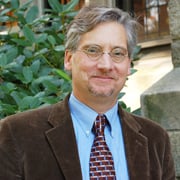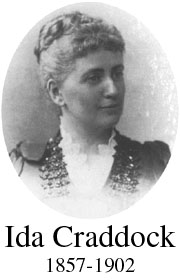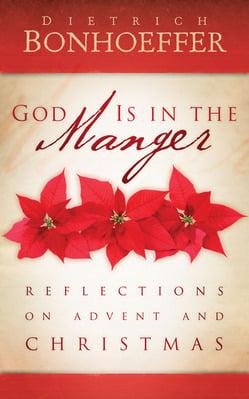 When I was a graduate student in American religious history, I had the privilege of taking a couple of classes with Leigh Schmidt at Princeton University. Now at Harvard Divinity School, Leigh has continued his stellar career with several more interesting books, including one published this month about a 19th-century doyenne I’d never even heard of until now. Heaven’s Bride recovers the fascinating, twisted life of Ida Craddock and deserves a wide readership. –JKR
When I was a graduate student in American religious history, I had the privilege of taking a couple of classes with Leigh Schmidt at Princeton University. Now at Harvard Divinity School, Leigh has continued his stellar career with several more interesting books, including one published this month about a 19th-century doyenne I’d never even heard of until now. Heaven’s Bride recovers the fascinating, twisted life of Ida Craddock and deserves a wide readership. –JKR
Leigh, this biography is about a woman who is billed as an “American mystic, scholar, sexologist, martyr, and madwoman.” That’s a heck of a lot to live up to. Who was Ida Craddock?
The incredible thing is that Craddock lives up to each of those billings. There’s truly no hype in saying that. Born in 1857 in Philadelphia, she came from a merchant family with a mix of Quaker and Methodist influences. From a young age she saw herself as an intellectual in the making, and her first foray into public controversy was a three-year effort to open Penn’s liberal arts college to women. She always counted her scholarly endeavors, largely frustrated, as a primary ambition, taking on topics in the study of religion (such as phallic symbolism) that were deemed utterly inappropriate for a woman to broach. At the same time, she became increasingly interested in spiritualism–that is, communing with spirits, whether through mediums or Ouija boards–and, through those experiments, she became a visionary all her own, even founding her own Church of Yoga in Chicago in 1899. Also, at the same time, she re-imagined herself as a marriage reformer–or, as she liked to say, “an expert in sexology.” In that role, she produced a number of how-to guides for married couples, and those pamphlets were repeatedly outlawed as obscene literature. Hence, in battling the grand censor and vice-fighter Anthony Comstock, she became a martyr for civil liberties, fighting for freedom of expression and religion to the very end. Posthumously, her writings were discovered by one of America’s earliest Freudians, and he turned her into his favored case history for psychoanalysis, an exemplar of religious and sexual manias. In a word, she gets canonized as a madwoman.
You’ve had some wonderfully quirky scholarly interests in your career, everything from Christmas to ventriloquism. How did you first learn about Ida Craddock? What made you decide to devote a book to her?

Several years ago I wrote a book on the making of American spirituality and came across her in that research. She seemed like an archetypal religious seeker and would have fit quite well in that story. Her papers, though, were off at Southern Illinois University, and I never got a chance to go there until shortly after Restless Souls was done. When I saw the Craddock papers–the wealth of letters, her diary of mystical experiences, the unpublished book manuscripts–I instantly thought that hers was a story worth telling, that recovering her life from the censors, medical psychologists, lawyers, and judges offered a rare chance to hear again the suppressed voice of a one of Comstock’s targets. I also glimpsed in her story an opportunity to see the sweeping cultural conflicts of the day–ones that still shadow us in debates about religious freedom, evangelical politics, sex, and civil liberties–in a grain of sand.
Craddock was a sex therapist at the turn of the 20th century (before we even knew the term “sex therapist”). She made waves by arguing that sex was highly spiritual, even mystical. How was that received at the time?
Not well. At least, if one takes her repeated arrests as an indication of serious disapproval. Then again, though, in her actual sessions with clients–her notes on these sessions survive in her papers–she clearly develops a strong rapport with many of them, and women especially were drawn to her spiritualized view of sex. Many of her male clients, by contrast, urged her to take up a real sex trade and stop with all the religious talk. They really expected her to be a showgirl or prostitute.
Craddock hung out with Quakers and Unitarians, founded and pastored the “Church of Yoga,” and tried her hand at being a medium. How did she prefigure the “spiritual but not religious” eclecticism of today?
She wound her way through one religious movement after another, though the Unitarian church seemed about as close to a “church home” as she ever came. Her interest in the religious practices of India, including a meditative version of yoga, was not entirely novel for her day, but it was a pretty good augur of how the old ideal of a morally unified and redeemed Christian nation was fraying. She was a spiritual eclectic of the first order, but she paid for that. Comstock always thought of her as doubly guilty: a purveyor of both blasphemy and obscenity.
This is the first biography you’ve written. What were some of the challenges in researching and writing a biography?
I loved doing it. It catered to my obsession for tracking down every last quirky detail. Of course, that species of historical hoarding then presents its own narrative challenges. What you have to discern is the telling detail from the raft of details. I also relished the challenge of trying to make historical arguments within and through her story. Biography is not a genre known for packing an analytic punch, but I hope this one does.
Why have Americans largely forgotten about Craddock, when some of her contemporaries–including Emma Goldman and Margaret Sanger–live on as historical figures?
Goldman and Sanger are major figures; Craddock was kept on the margins through her idiosyncrasies. Many of her contemporaries, including her own mother, thought her spiritualist notions qualified her as an insane person. (After all, she claimed that a long-departed suitor had come back to her as an angelic husband in the dreamland of her spiritual life.) In the nineteenth century, religious innovators were often the conduit of sexual revolutions of one kind or another. In the twentieth century, the religious elements of sex radicalism were often put aside in favor of more secular, scientific, and consumerist idioms for thinking about sexual expression. Craddock and company often got cast as disreputable cranks that had little to contribute to the cause in its modern guise. That Craddock did not fit well with the latter-day sexual revolution did not stop Playboy magazine from highlighting her as an inaugurator of the “Century of Sex.” Mostly, she has been forgotten–until now–and shady memories of her, like Playboy’s, have hardly done justice to her colorful and oddly consequential life.


